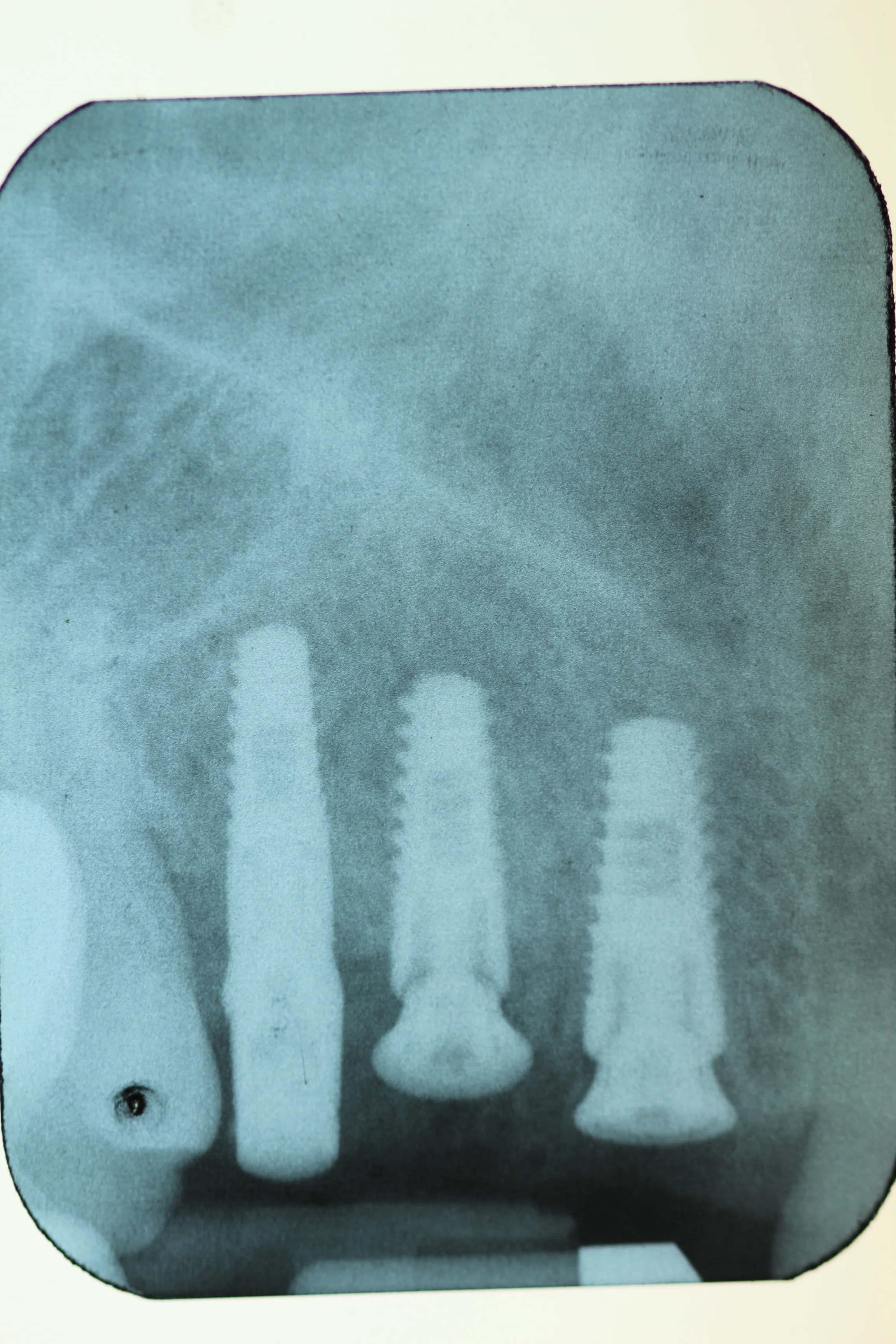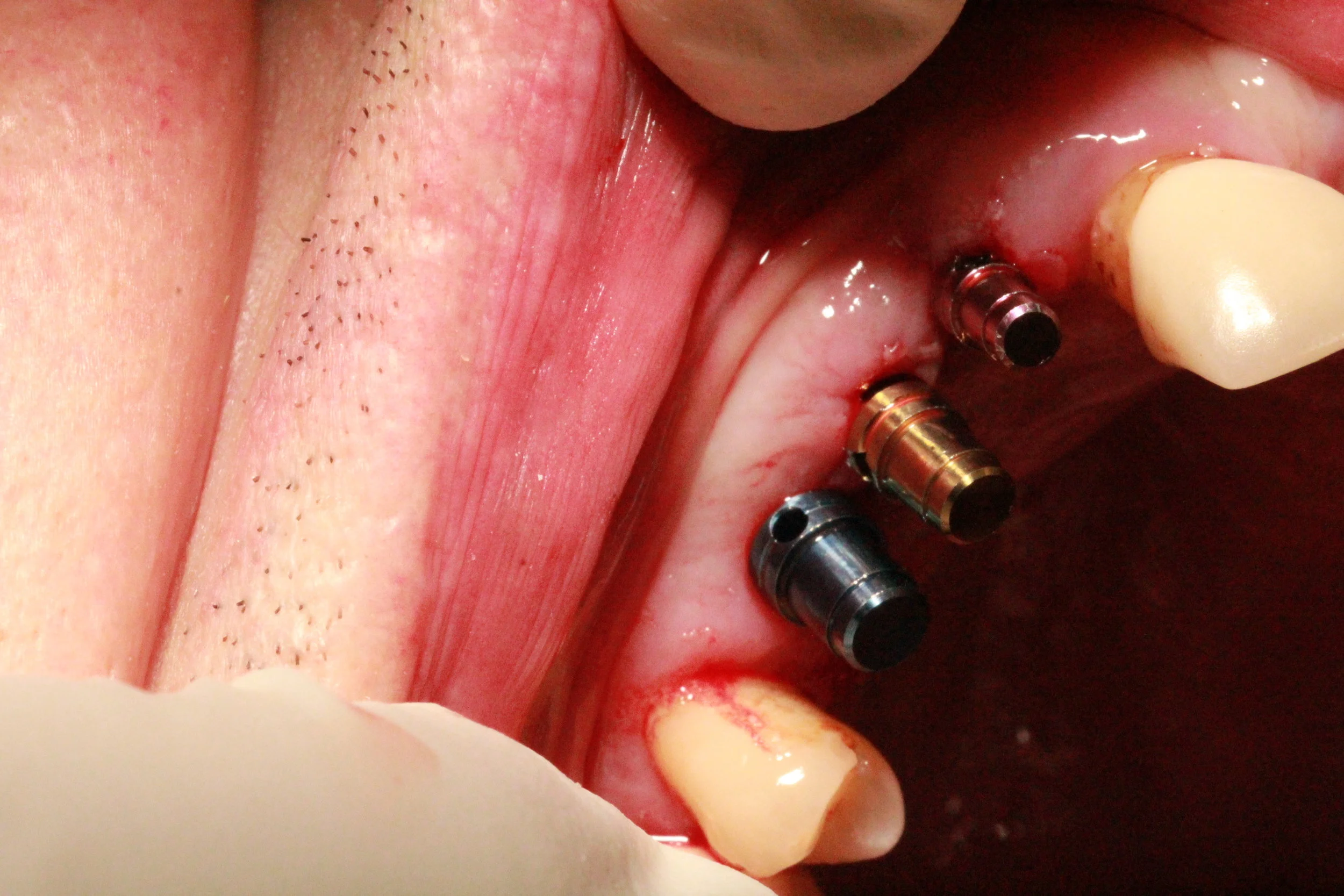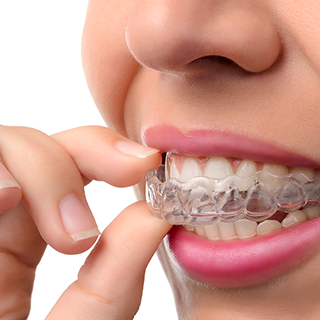
Clinic for Implant
&
Orthodontic Dentistry, procedures explained, offers, information,
Very Important advice for all implant patients. By Dr Amir Mostofi DDS, Dip. MSc
Following your implant surgery, ask for a written copy of your implant details. It should include brand, model and specific details like diameter and implant connection type. Keep these details somewhere safe for a very long time. The reason for that is it makes it much more easier for another dentist 10-20 years later to unscrew the prosthesis above the implant and use the implant base (in jaw bone) for something else. Do not trust that the clinic will always retain a copy of your implant details as accidents happen, dental practices shut down and clinical notes could become lost and sometimes clinical notes are not very clear. It is very difficult and almost impossible for a new dentist to guess what specific type of implant has been used in your mouth.
When not to have full jaw implants?- By Dr Amir Mostofi DDS, Dip. MSc
The reasons that follow are the most common, however each case should be considered by a qualified implant dentist.
- Heavy smokers.
- Patients with severe bruxism (grinding teeth).
- Individuals taking bone loss prohibitory medications (like bisphosphonates for osteoporosis).
- Patients unable to perform routine brushing procedure.
- Patients with severe and long term systemic illness like diabetes, which might affect the healing following surgery.
- Radiation (to the jaws) & chemo therapy.
- Patients with cognitive decline (memory, speech, motoric, judgment and thinking).
- Very advanced age.
- Bleeding disorders.
- Bone disease.
- Severe psychiatric disorder.
How long to wait following an extraction for a implant placement?- By Dr Amir Mostofi DDS, Dip. MSc
How long following an extraction should you wait before having an implant placement to fill the gap? In reality on the same visit you can have an implant inserted, but such approach is not always possible. The reason could be because there are not enough bone in the extraction socket to support a new implant, or severe infection in the site. However, if you wait too long following an extraction, the jaw bone in extraction socket will start shrinking and you have less bone in extraction site. Numerous studies have been carried out to find out the optimum waiting time prior to an implant placement in an extraction site. It appears that optimum time is between 8 to 12 weeks following extraction for a new implant placement.
Root canal or implant , which one is better?- By Dr Amir Mostofi DDS, Dip. MSc
Many people some times come to a point when they should choose between an option of root canal treatment or perhaps option of extraction of a tooth and later replacing the missing tooth by an implant. The question is which one is a better, more long lasting, less trouble some and cheaper option? Like many times in life there is no straight forward and easy answer to this, however, I try to out line the main differences in here.
First point that a lot patients ask me, is how long each one lost? The life span of an implant depends on many different factors but the most important factor is place in the mouth where an implant is inserted.
Many people some times come to a point when they should choose between an option of root canal treatment or perhaps option of extraction of a tooth and later replacing the missing tooth by an implant. The question is which one is a better, more long lasting, less trouble some and cheaper option? Like many times in life there is no straight forward and easy answer to this, however, I try to out line the main differences in here.
First point that a lot patients ask me, is how long each one lost? The life span of an implant depends on many different factors but the most important factor is place in the mouth where an implant is inserted. Usually implants at upper or lower front part of a mouth last longest and implants at upper molar region last less. There are several studies that shows 85% - 95% of implants survive up to 15 years. The survival rate for root canals is also dependent on a tooth position in mouth. Front teeth as they have less number of roots are more successful than molar teeth. On average 90% of root canal treatments are successful in a 15 year period.
From a cost point of view a root canal with a restoration at the top , cost less in comparative to an extraction plus implant and a crown at the top of implant.
Time wise a root canal with restoration is completed in much shorter time compare to extraction , waiting for healing period, implant insertion, waiting for implant integration with bone and later fitting a crown at the top of implant.
As a general rule my first recommendation to our patients is a root canal. However, there are cases where performing a root canal is not a good option and considering for an implant becomes a better choice.
Making Dentistry Affordable - Payment Plans
Want high quality dental treatment but are worried about the costs?
If so then look no further because we have payment plans to help suit you! We have interest free finance for those one offs either over 6 or 10 months. We also have a denplan payment plan which is a monthly payment plan for longer term planning.
Our plans are easy to sign up for and our higly trained nurses/recepton can tell you more information and guide you through the application process.
No more NHS dental treatment. You can finally afford that high quality private treatment you've always wanted. We can finance all of our treatments such as the following.
Want high quality dental treatment but are worried about the costs?
If so then look no further because we have payment plans to help suit you! We have interest free finance for those one offs either over 6 or 10 months. We also have a denplan payment plan which is a monthly payment plan for longer term planning.
Our plans are easy to sign up for and our higly trained nurses/recepton can tell you more information and guide you through the application process.
No more NHS dental treatment. You can finally afford that high quality private treatment you've always wanted. We can finance all of our treatments such as the following.
- Implants
- Dentures
- Fillings
- Crowns
- Bridges
- Teeth Whitening
- Home Visits
- Extractions
- Root Canal Treatments
Invisalign - Clear braces
What is Invisalign/clear aligners?
Aligners are thin clear flexible plastic ‘mouthguards’ which fit closely over the teeth. A series of aligners are used to move the teeth incrementally according to a treatment plan developed by the orthodontist. Aligner appliances are ideally suited to adult patients whose life-style or work commitments make it difficult for them to wear more visible conventional fixed appliances.
When can Invisalign/aligners be used?
Aligners are most commonly used in cases needing alignment of teeth without extractions. Routine aligner treatments include:
- Mild-moderate dental irregularity
- Crowding which can be corrected with mild-moderate expansion of the dental arch
- Crowding which can be corrected with reductions in tooth width (Inter-proximal reduction or slenderising)
- Mild spacing
Do I need aligners for both top and bottom teeth if I only want one straightened?
Changes in teeth crowding and spacing affect your bite, so to make sure your bite isn’t affected, our dentist likes to assess both arches and more often than not treat both arches at the same time to achieve the perfect results for your perfect smile.
How long does the treatment take?
The typical treatment length for aligners is around 5 months. The typical person will receive a series of 5 invisible aligners that need to be changed every 3 weeks or so. Some patients will receive slightly more or less aligners. This depends on the degree of teeth straightening required.
Payment Plans
We do have interest free payment plans avaliable in order to spread the cost.
In order to get urther information please visit our page for Invsalign here.
Dementia Awareness - Dementia Friendly Dental Practice
Dementia awareness among dentistry is becoming increasingly important. Therefore, we as a surgery have decided to take the necessary steps to work towards being a dementia friendly practice.
We are doing this by:
- Joining the Alzheimers Societies Dementia Awareness programme - Meaning we are Dementia Friends
- We have conducted an audit to look for any shortcomings in the way we run our practice
- We have an action plan to move foward
- We are looking into joining Worthings Dementia Action Alliance
- We have had recent training in how dementia affects people
- We will continue to update on how we have improved our practice to aid people with dementia and their carers/family members feel more comfortable while they are with us.
Implant Procedure - Final Step - Fitting the Crown
This is the final step of the procedure.
A few weeks after the impressions usually about 2 weeks you will be asked to come back to have the final fit of the crown. During this appointment the clinician will try in the crown or bridge that has been sent back from the laboratory. They will initially just try it in and ensure it doesn't need any major changes. If they are happy with that then they will proceed to either cement retain the crown or to screw it in to permenantly place it.
The clinician will then check the bite and ensure that you are fully happy with it. Once everyone is satisfied you will be then finished.
GDPR
As many of you are probably aware. The new GDPR regulation came into affect as of today. It means that it will affect the way that we can process any data that we have of patients. Please have a read of our Cookie Policy, Privacy Policy and Fair Processing Notice before you coninue on our website.
Thank you for you co-operation.
Implant Procedure - Step 3 - Taking Impressions
This is the stage that will begin the procedure for making the crown to finish the implant.
Firstly, the implantologist will select an impression tray that matches your personal mouth size so it is the most comfortable.
Following this, the implantologist will place a special abutment into the implant which the impression will go round and show the laboratory exactly how the implant has been placed and give them a good idea on how to make the crown.
Then, they will have their nurse mix the impression material and place it into the tray. The nurse will then pass that to the implantologist and place it into your mouth. This is uncomfortable for many patients but the best thing to do is just breathe through your nose and focus on your breathing and not whats going on.
After this, they will unscrew the abutment so that the impression comes out. They will then send this to a laboratory where they will make the crown to fit on your implant.
Implant Procedure Step 2 - Placing the implant - Part 2
Once the pilot hole has been made then the implantologist will use drill pieces of increasing sizes to slowly made the hole bigger. This allows the implantologist to slowly increase the length and width until they are happy with the size.
During the increasing sizes a thread will be made in the bone so that the implant will be able to be screwed in easily. Some implants can be self-tapping which means that they create there own space to fit.
Once the implantologist is happy they will often place a direction indicator in the pre-made hole this is just to assess what direction that the implant will be. They may also take x-rays with drill pieces in the hole as they are going along this is to make sure that everything is going as best it can and so that they can measure accurately.
Once they are happy with the size they will then screw in the implant. The implantologist here prefers to use a little wrench a do it by hand as he feels he gets the best results that way. However, some implantologists will use a machine that measures everthing for them.
Implant Procedure Step 2 - Placing the Implant Part 1
This is the stage that the actual implant placement will take place. This can be from a week after the investigation to a few months (if there has been an extraction).
This is quite a lenghty appointment. Usually, we will book an implant for 3 hours and it takes 30 minutes to set up for the procedure. However, don't be put off by the length of time that the appointment is sometimes it can take a much shorter time it is just given to ensure there is no rush. The procedure is a very stop start procedure. This means that the implantologist will work a little then stop for a bit; possibly to take x-rays or prepare for the next stage, and then continue to work.
During the placement the Implantologist will start off by creating a space for the implant to be placed into. This means that the implantologist will begin with a pilot drill to give a starting point as to where the implant will be placed. If a surgical guide was made then this would be used to accurately place the pilot hole.
Implant Procedure Step 1 - Investigation
The initial stage for having an implant done is the investigation. This stage is where the implantologist will go through options with you, take x-rays and photographs and start to plan exactly where the implants will be placed.
During this stage sometimes the implantologist will request that you have a 'surgical guide' made. This is like a denture that is clear and has holes drilled into it. This assists the implantologist when placing the implants to improve accuracy.
They may also request that you have a CBCT scan done. This allows them to use special programs on their computers to plan and place implants. This means that they have an even better idea of the best place to insert the implant to ensure the highest success rate.
Fixed Retainers
These consist of a thin stainless-steel wire, which is permanently bonded behind the front teeth.
We usually fit your fixed retainers as soon as your braces are removed.
When you have this type of retainer you must try to be careful when brushing it and ensure you clean it thoroughly.
Like the other two types of retainers these serve the same purpose to help keep the teeth in the same position that they have been moved to.
An example of a fixed retainer before fitting
Essix Retainers
These have the same function as the Hawley retainer to ensure the treatment of braces in not reversed after they are removed.
However, these are usually favoured due to them being made of a clear plastic and are more aesthetically pleasing.
They also cover the entire arch of the teeth not just portions like other retainers.
An example of an Essix retainer














